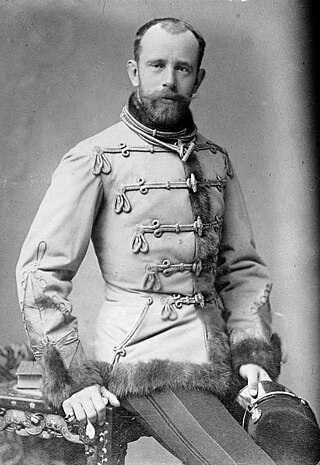
Rudolf, Crown Prince of Austria was the only son and third child of Emperor Franz Joseph I of Austria and Duchess Elisabeth of Bavaria (Sisi). He was heir apparent to the imperial throne of the Austro-Hungarian Empire from birth. In 1889, he died in a suicide pact with his mistress Baroness Mary Vetsera at the Mayerling hunting lodge. The ensuing scandal made international headlines.

Archduchess Elisabeth Marie Henriette Stephanie Gisela of Austria was the only child of Rudolf, Crown Prince of Austria, and Princess Stéphanie of Belgium. Her father was the son and heir apparent of Emperor Franz Joseph I of Austria, and her mother was a daughter of King Leopold II of Belgium. She was known to her family as "Erzsi", a diminutive of her name in Hungarian. Later nicknamed The Red Archduchess, she was famous for becoming a socialist and a member of the Austrian Social Democratic Party.
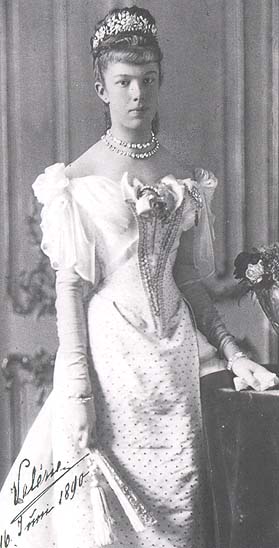
Archduchess Marie Valerie Mathilde Amalie of Austria was the youngest child of Emperor Franz Joseph I and Empress Elisabeth of Austria. She was usually called Valerie.

Sophie, Duchess of Hohenberg was the wife of Archduke Franz Ferdinand of Austria, the heir to the Austro-Hungarian throne. Their assassination in Sarajevo sparked a series of events that led, four weeks later, to World War I.

Archduke Joseph August Viktor Klemens Maria of Austria, Prince of Hungary and Bohemia was a Feldmarschall of the Austro-Hungarian Army and for a short period head of state of Hungary. He was a member of the House of Habsburg-Lorraine, the eldest son of Archduke Joseph Karl of Austria (1833–1905) and his wife Princess Clotilde of Saxe-Coburg and Gotha (1846–1927). Joseph August's grandfather had been Palatine Joseph of Hungary (1776–1847), Palatine and Viceroy of Hungary, a younger son of Leopold II, Holy Roman Emperor.

Prince Gustav of Vasa, Count of Itterburg, born Crown Prince of Sweden, was the son of King Gustav IV Adolf of Sweden and Queen Frederica. His Austrian princely title was actually spelled Wasa.

Elisabeth of Bavaria was Queen of the Belgians from 23 December 1909 to 17 February 1934 as the wife of King Albert I, and a duchess in Bavaria by birth. She was the mother of King Leopold III of Belgium and of Queen Marie-José of Italy, and grandmother of kings Baudouin and Albert II of Belgium, and Grand Duchess Joséphine-Charlotte of Luxembourg.
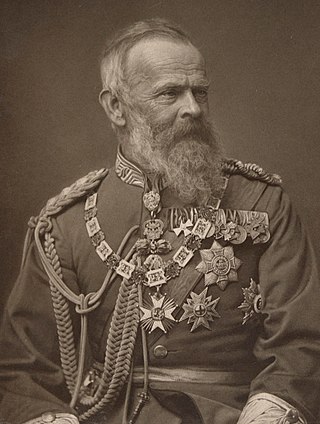
Luitpold Karl Joseph Wilhelm Ludwig, Prince Regent of Bavaria, was the de facto ruler of Bavaria from 1886 to 1912, as regent for his nephews, King Ludwig II and King Otto. His regency arose due to his nephews' mental incapacity.

Georg Christian, Prince of Lobkowicz was a Austro-Bohemian noble and politician. He was member of the old Bohemian aristocratic Lobkowicz family and an influential politician of late 19th century Bohemia and Austria-Hungary. He was a Prince (Fürst) of Lobkowicz.

Ludwig Wilhelm was a Duke in Bavaria and official head of the ducal branch of the House of Wittelsbach.

Duke Maximilian Joseph in Bavaria, known informally as Max in Bayern, was a member of a junior branch of the royal House of Wittelsbach who were Kings of Bavaria, and a promoter of Bavarian folk-music. He is most famous today as the father of Empress Elisabeth of Austria ("Sisi") and great-grandfather of King Leopold III of Belgium.

Prince Adalbert Wilhelm Georg Ludwig of Bavaria was the ninth child and fourth son of Ludwig I of Bavaria and Therese of Saxe-Hildburghausen.

Archduke Joseph Karl of Austria was a member of the House of Habsburg-Lorraine. He was the second son of Archduke Joseph, Palatine of Hungary and Duchess Maria Dorothea of Württemberg.

Prince Konrad of Bavaria was a member of the Bavarian Royal House of Wittelsbach.

Prince Arnulf of Bavaria was a member of the Bavarian Royal House of Wittelsbach and a General of Infantry.
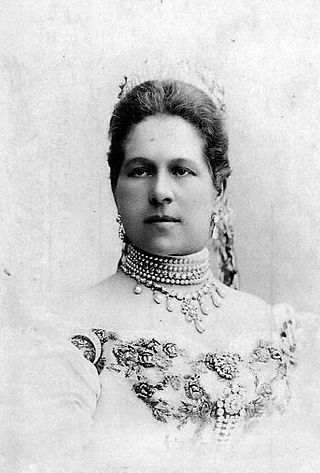
Princess Isabella Hedwig Franziska Natalie of Croÿ was by birth member of House of Croÿ and by marriage member of House of Habsburg.
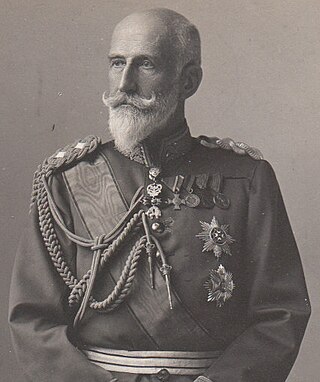
Philipp, Duke of Württemberg was a German prince, head of the Roman Catholic cadet branch of the dynasty which ruled the Kingdom of Württemberg.
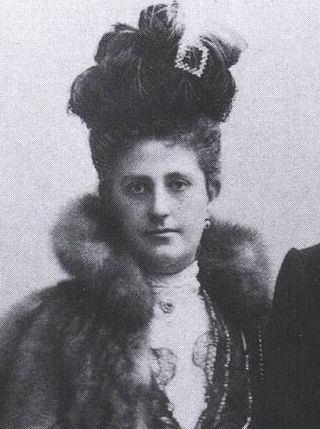
Archduchess Maria Theresa of Austria was a member of the House of Habsburg-Tuscany and Archduchess of Austria, Princess of Tuscany by birth. Maria Theresia was the eldest child and eldest daughter of Archduke Karl Salvator of Austria and his wife, Princess Maria Immaculata of Bourbon-Two Sicilies.

Duke Maximilian Emanuel in Bavaria was a German prince of the House of Wittelsbach, and a brother of Elisabeth of Bavaria. He married Princess Amalie of Saxe-Coburg and Gotha in 1875, and had three children with her.

Hermann Freiherr von Spaun was an admiral in the Austro-Hungarian Navy. He was the Commander-in-Chief of the Austro-Hungarian Navy from December 1897 to October 1904.























